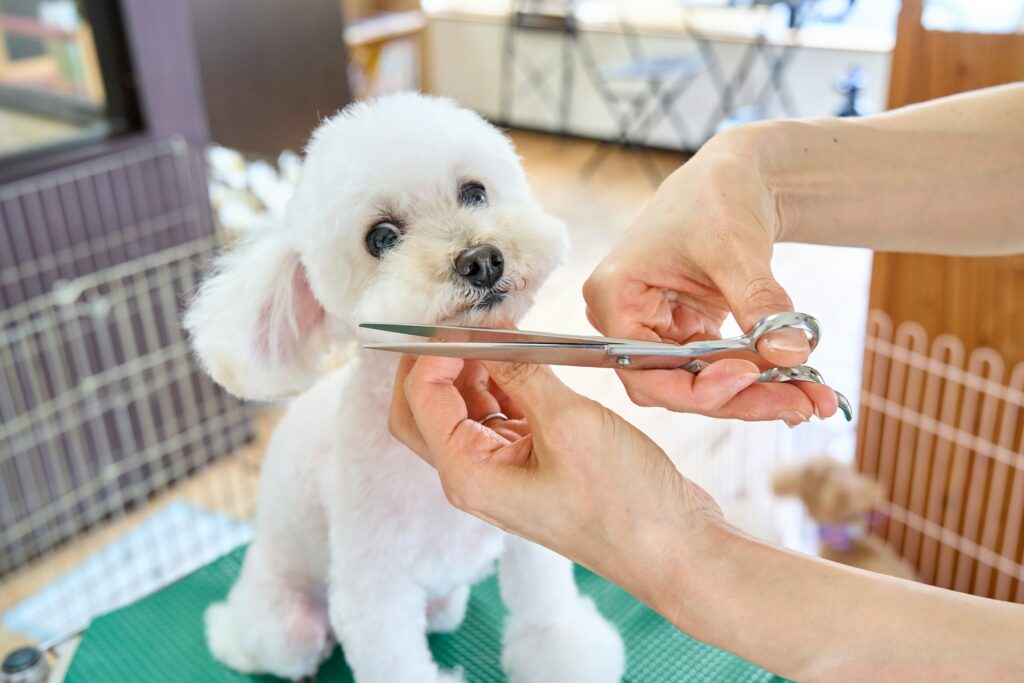Why Pet Wellness Deserves More Attention
Pet health isn’t just about treating illness anymore—it’s about avoiding it altogether. Over the past few years, there’s been a noticeable shift toward proactive, long-term wellness for animals, and it’s gaining real traction. Owners are reading more labels, asking more questions, and scheduling routine check-ups like clockwork. And it’s not just driven by love—wellness-focused care saves money and extends quality of life, plain and simple.
Preventive measures like proper nutrition, vaccinations, and regular dental care are proving to be game changers. Catching problems early, or avoiding them entirely, leads to healthier pets and fewer emergency vet visits. This isn’t a trend—it’s a movement centered on smart choices and informed care.
But pet wellness isn’t a solo act. Vets provide essential expertise, owners drive daily decisions, and communities—both digital and local—offer shared knowledge and support. Progress happens when those three pieces work together. The more we approach pet care as a collaboration, the better the outcomes for every furry, feathered, or scaled companion.
Foundational Care: The Non-Negotiables
No matter how many smart gadgets or high-end toys you throw at your pet, good health starts with the basics. First up: vet visits and vaccinations. At minimum, pets should see a vet once a year—twice if they’re older or have chronic conditions. These check-ins aren’t just for shots. They’re how you catch problems early. Skipping them is like ignoring the check engine light.
Vaccinations follow a set schedule, and that schedule matters. Puppies and kittens need a typical series in their first few months, while adults need regular boosters. Your vet will tailor the plan based on lifestyle—indoor cat, hiking dog, urban ferret, whatever you’ve got.
Next, food. Nutrition isn’t one-size-fits-all. Breed, age, weight, and activity level all play into what your pet should eat. A lazy bulldog and a sprint-loving border collie aren’t running on the same fuel. Talk to a vet or certified pet nutritionist instead of relying on what looks healthy on a bag.
Then there’s the stuff people love to ignore: dental care, grooming, and parasite control. Leaving them out isn’t harmless—bad teeth can cause systemic disease, dirty ears can result in infections, and fleas and ticks spread fast. Brush their teeth. Bathe when needed. Keep up with flea, tick, and heartworm preventatives year-round.
It’s not flashy, but this is the bedrock. Do these things right, and you prevent 80% of the problems owners stress about later.
Everyday Wellness Tools That Actually Work
Staying ahead of your pet’s health doesn’t always mean rushing to the vet. With today’s wellness tech, you can monitor, track, and even predict your pet’s needs, all from home. Here’s a breakdown of the most effective tools available and how to use them wisely.
Pet Health-Tracking Apps
Health apps make it easier than ever to log everything from vet visits to daily meals. Depending on the app, you can set medication reminders, track weight, monitor symptoms, and even share updates with your vet. Look for features like cloud syncing, multi-pet support, and behavioral logging.
Popular options include:
- Pawtrack: Great for cat-specific activity tracking
- PetDesk: Offers appointment reminders and medical records
- 11Pets: Known for grooming, medications, and toilet schedules
Wearables for Activity & Sleep Monitoring
Just like human fitness trackers, pet wearables can help you monitor your animal’s exercise and rest patterns. These devices are useful for early detection of abnormalities, tracking recovery after illness, and ensuring your pet is getting enough activity.
Devices worth considering:
- Whistle Health: Tracks activity, sleep, and even scratching behavior
- FitBark: Monitors health trends and syncs with your own fitness tracker
- Tractive GPS: Adds location tracking to help active pets stay safe
At-Home Testing Kits: A Smart Addition, But Use Wisely
Pet parents can now screen for certain health conditions without leaving home. Available tests range from general wellness panels to more specific options like allergen sensitivity or microbiome analysis. However, these tools should complement—not replace—professional exams.
What’s worth investing in:
- Basepaws (for cats): Offers dental health and genetic risk screening
- Embark (for dogs): DNA test with health trait insights
- CheckUp Kit: Urine test strips to evaluate hydration, glucose, and more
What to skip:
- Kits that promise diagnosis without lab validation
- Non-vet-reviewed brands with vague or inconsistent data
When used intentionally, these tools can help you become more proactive about your pet’s well-being—and share better insights during vet visits.
Mental Health and Enrichment
Mental stimulation is just as important as a full belly or a clean bill of health. The hard truth: bored pets act out. That can mean chewed shoes, scratched furniture, or non-stop barking. But those aren’t the problems—they’re the symptoms. Underneath, it’s often stress, anxiety, or plain old monotony.
Pay attention to the signals. Pacing, hiding, obsessively licking themselves, or being clingy to the point of distress—they’re not just quirks. Regular behaviors that shift suddenly or feel intense are often your first warning signs that something’s off.
Daily play sessions are the simplest fix, and one of the most overlooked. Whether it’s 15 minutes of laser-tag with a bored cat or a structured fetch game with a high-energy dog, that guaranteed time together burns energy and tightens your bond. It doesn’t need to be fancy—it needs to be consistent.
DIY enrichment doesn’t require a trip to the pet store either. Puzzle feeders made from cardboard tubes, frozen treat toys, snuffle mats made from fleece strips—basic materials become big deals when used with purpose. Even for small animals like rabbits or guinea pigs, rotating tunnels, hiding spots, and chew-safe props can reduce stress and mimic natural behavior.
Enrichment isn’t about doing more, it’s about doing smarter. You don’t have to entertain them all day. You just need to make part of their day interesting, on purpose.
Training as a Health Measure
Training isn’t just about making your pet behave—it’s a tool for building emotional security. When pets know what’s expected of them, their anxiety drops. Discipline—when handled right—gives them structure and confidence. A dog that sits on command or a cat that comes when called isn’t just showing off; they’re operating from a place of self-assurance.
At the heart of effective training is positive reinforcement. It’s not about punishment—it’s about setting your pet up to win. Reward behaviors you want to see again. Whether that’s with treats, toys, or vocal praise depends on what lights your pet up. The timing matters. Immediate feedback works best, especially with young pets or newly adopted ones.
Professional trainers have leaned hard into scientifically backed techniques that build trust over time. Among the best are clicker training, shaping, and reward systems tied to clear commands. These approaches give your pet clarity, reinforce their progress, and promote calmer behavior across the board.
For a full breakdown of methods that work (and how to apply them step by step), head over to Step-by-step Training Guides.
Emergency Readiness
Emergencies don’t wait for convenience. Whether it’s a natural disaster, sudden illness, or late-night injury, being prepared can make all the difference—for you and your pet.
Start with the essentials. A solid emergency kit should include:
- A 3-day supply of food and water
- Backup leash, harness, and collar (with ID tags)
- Medications with instructions
- Copies of medical records and a recent photo of your pet
- A basic first-aid kit: tweezers, antiseptic wipes, gauze, non-stick bandages
- Waste bags, crate or carrier, blanket, toys
Keep it ready to grab, stored in a dry, accessible place. Refresh supplies every six months.
For real-time crisis support, apps like Pet First Aid by American Red Cross or Pawprint can be lifesavers—literally. They offer vet-approved first-aid guidance and help you store health records. Hotlines like the ASPCA Animal Poison Control Center (888-426-4435) and Pet Poison Helpline (855-764-7661) run 24/7—program them in now, not later.
How do you know it’s time for urgent care? Trust your gut, but look for red flags: sudden limping, rapid breathing, persistent vomiting, pale gums, or unresponsive behavior. If you’re unsure, call a vet or emergency line and describe the symptoms. A delay can cost more than time.
Preparedness isn’t about paranoia. It’s basic pet care—done right.
Best Free + Paid Resources Worth Bookmarking
The internet is full of advice, but when it comes to your pet’s health, credibility is everything. Start with vet-verified sites like the American Veterinary Medical Association (AVMA) and VCA Hospitals, which stay updated with peer-reviewed insights. For regular listening, hit up “The Vet Scoop” or “Dr. Justine Lee’s Vet Girl”—veterinarian-hosted podcasts that break topics down without dumbing them down.
If you’re digging into behavior and training, stick with certified sources. Online courses from The Karen Pryor Academy, Victoria Stilwell Academy, or the International Association of Animal Behavior Consultants (IAABC) deliver proven techniques without gimmicks. They’re not always free, but they’re legit—and worth it.
For product reviews, skip influencer noise and head straight to Wirecutter (pet section), PetMD, or Consumer Reports. These outlets test gear and wellness items with a bit more rigor than your average TikTok haul or sponsored post.
No fluff here. Stick with sources that back their claims, and your pet will thank you with fewer vet visits and more tail wags—or slow blinks, if yours is the feline type.
Final Word: Pet Health is an Ongoing Journey
You don’t need to overhaul your entire routine to make a difference in your pet’s life. The real impact comes from small, steady habits. Daily walks, regular check-ins on behavior, keeping up with feeding schedules, basic grooming—it all adds up. It’s not flashy. It’s not complicated. But it matters more than you think.
Learning never stops, but you don’t need to drown in data. Choose a couple of trusted sources—your vet, a pet-focused podcast, or a monthly email from a reputable animal health organization. Skim what matters. Let go of the noise. Staying informed doesn’t have to mean getting overwhelmed.
At the end of the day, caring for your pet is less about perfection and more about presence. Paying attention. Asking questions when things seem off. Making space for quality time. Build that rhythm, and you’re not just raising a healthy animal. You’re fostering a relationship that lasts, built on respect, observation, and the quiet kind of love that shows up every day.




